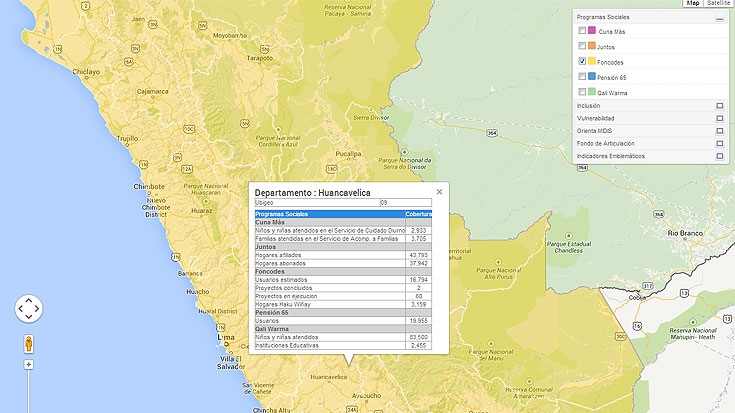Challenge
To improve its social inclusion policies, the Peruvian government identified the following challenges:
Poverty mapping for better targeting: To guide the allocation of resources to poor areas, poverty maps are an extremely important and relevant tool from an operational and political economy context. The technical challenge was to identify the best way to estimate the maps. Additionally, the challenge was to connect the production of the maps by INEI to the use of the maps by MIDIS in their social program targeting discussions, thereby increasing the overall policy relevance of the poverty maps.
Increasing the value of M&E information in MIDIS: The information generated by the M&E systems is only valuable if it is broadly used. Under traditional M&E arrangements, the efforts of the evaluation area are concentrated in generating evidence. However, in many cases, the users of the evidence do not have the technical capacity, the resources, or the incentives to use this information to improve evidence-based policy decisions.
Solution
The non-lending technical assistance (NLTA) provided by the Poverty and Social Inclusion NLTA II to INEI ranged from completing the technical validation of the existing poverty maps, presenting a proposal to the Peruvian Poverty Committee about the best way to estimate the maps, and opening a broader discussion about targeting in Peru. In addition, the technical assistance supported activities with the more concrete objective of promoting the effective use of M&E information in the policy cycle. As part of this work the team has contributed to:
- Production of mobile apps to facilitate the use and increased transparency of MIDIS information.
- Development of a logical framework for the M&E activities in MIDIS focused on bridging the gap between the producers (M&E team) and the users (the social programs) of the evidence.
- Production of analytical products on poverty and social inclusion to serve as instruments to motivate and influence policies in MIDIS and in Peru.


